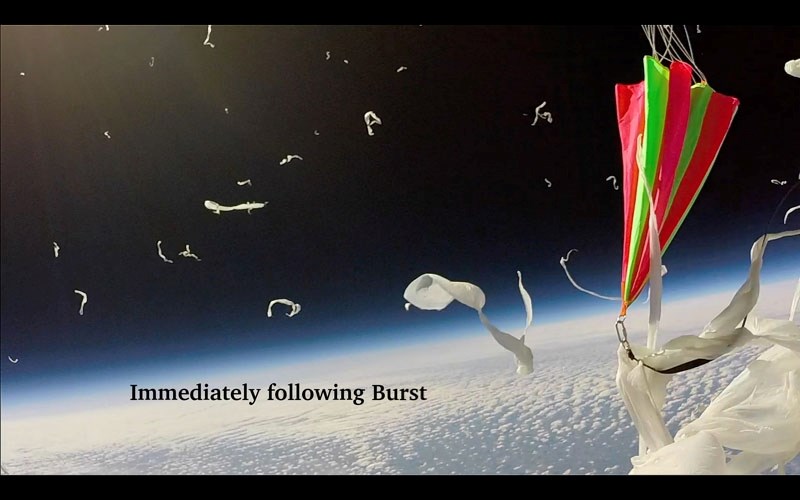Deadly cosmic radiation did not appear to cause the candy on the SABLE 10 space probe to mutate, reports a St. Albert science team.
Sir George Simpson teacher Tony Rafaat reports that the SABLE 10 team successfully retrieved its space probe/weather balloon several hours after it launched from the school grounds last Friday.
The St. Albert Balloon Launch Experiment is a long-running program at the school that has students send weather-balloon probes to the edge of space to learn about science. Last Friday was the 10th balloon launched under the program.
Rafaat said the chase convoy was late setting out because he accidentally locked his keys in his car. Once it did, the SABLE team used tracking devices to monitor the probe’s journey.
The balloon burst at about 11 a.m. at an altitude of about 104,000 feet (about 3.6 Mount Everests or 17,417 Mayor Nolan Crouses) – much sooner than the team had predicted. It also rose about 200 feet per minute faster than they expected, and inexplicably slowed significantly when it reached 43,000 feet. These facts suggest that the balloon was likely overinflated at launch and may have developed a small leak, Rafaat said.
The probe landed about 10 metres off of Range Road 240 in a field near Bon Accord, Rafaat said. An antenna and the external GoPro camera broke off in the process.
The probe had gone up carrying two experiments, the first of which was a test of the effects of UV radiation on eight types of candy.
While cosmic rays may have granted the fictional Fantastic Four with superhuman powers, Rafaat reported that no such mutations were observed in the candies.
“The marshmallow was somewhat darkened and kind of compressed,” he said, while the Skittle and gum tablet were significantly faded.
“Clearly, this is the result of intense ultraviolet exposure.”
The candies would have been exposed to more UV in the upper atmosphere than they would get on the Earth’s surface because there was less ozone layer between them and the sun up there, he explained.
The SABLE team was still analyzing the data from the second experiment (a programmable Arduino sensor package).
The team was now compiling a video of the launch it hoped to post in the near future, Rafaat said. He said he was also thinking about SABLE 11, which he hoped to make significantly lighter than this project.




